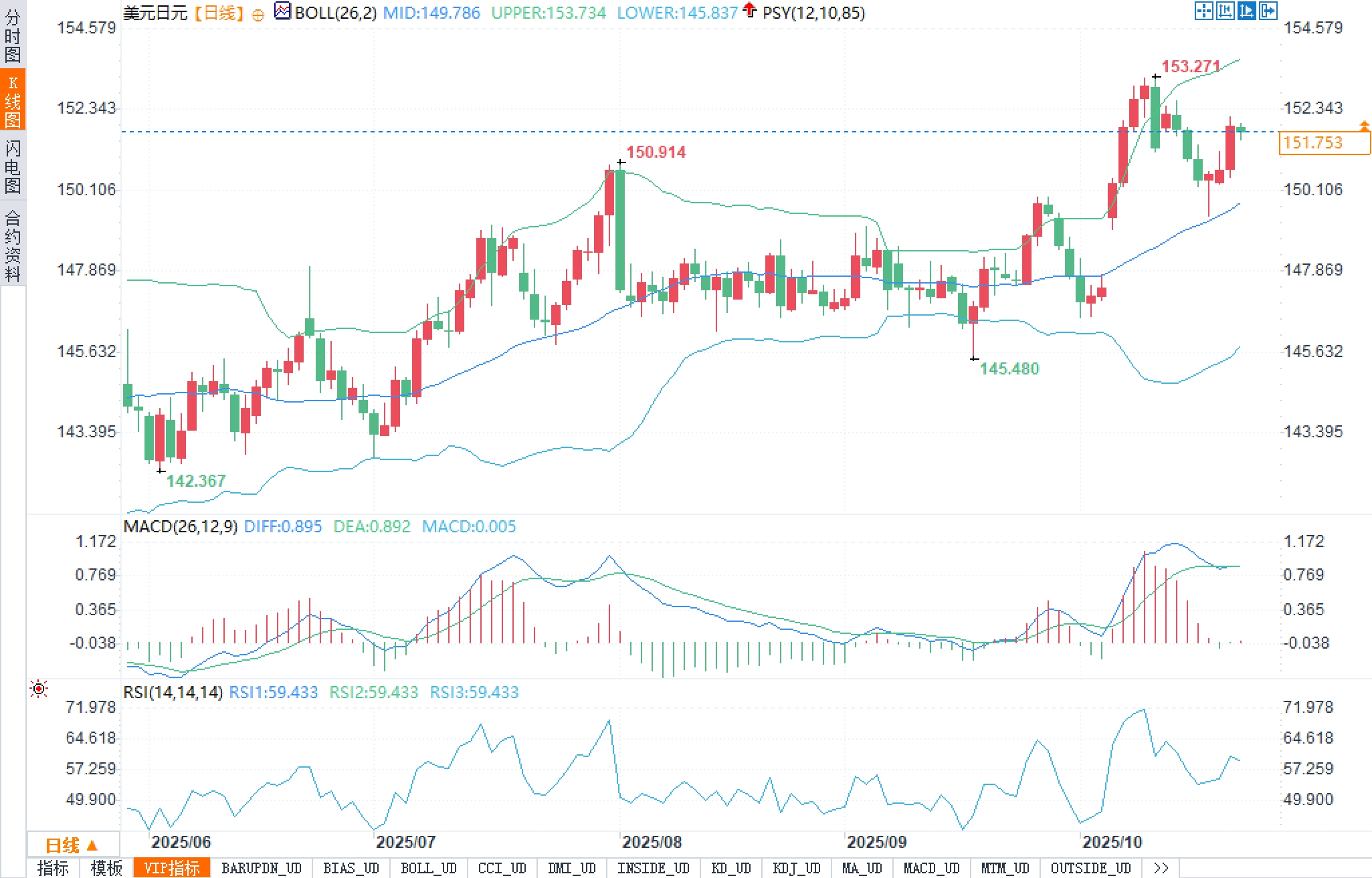One foot on the accelerator and one foot on the brake: USD/JPY amid misaligned fiscal and monetary signals
2025-10-22 18:33:10

Fundamentals
The US dollar has recently strengthened alongside a rebound in US Treasury yields, but its overall performance remains a mixed bag of strength and weakness, driven by periodic data vacuums and rapidly shifting risk appetite. Due to the US government shutdown, several key economic reports have been delayed. This Friday, US inflation data will be released, which will inform the parameters needed for adjusting social security, making its timely release crucial. For the so-called "repricing trade" in the US dollar to continue, strong fundamentals are needed, particularly a resilient labor market; any volatility in employment would weaken the dollar's momentum. Since the release of external "tariff threats," pricing in a more moderate interest rate path has become apparent. Markets currently anticipate a cumulative rate cut of approximately 126 basis points by the end of 2026, while the Fed itself projects only 75 basis points, leaving a significant gap between the two.
The yen initially enjoyed temporary support due to rising risk aversion, but as related tensions subsided, it gave up most of its gains. Domestically, the "high-market trade" trend cooled after Sanae Takaichi became Prime Minister. The main market trend remains that the Bank of Japan may continue to delay interest rate hikes, with the probability of a hike this year falling to 40%. Japanese Finance Minister Katayama Satsuki emphasized that the government will allow the Bank of Japan to operate independently, refraining from commenting on the foreign exchange and interest rate outlook. He repeatedly emphasized the need to strike a balance between fiscal prudence and economic growth, stating that it was premature to discuss the size of the supplementary budget; cautious adjustments to the sales tax; and the need for coordination with the Bank of Japan to ensure policy synergy. While refraining from commenting on interest rates, the phrase "it is not yet possible to declare deflation completely overcome" signaled caution. Overall, the slow-moving monetary policy and the balancing act on the fiscal front have created a volatile market for the yen.
For the US dollar, if inflation data this week comes in above expectations, the "rate cut pricing" in the interest rate curve could be partially offset, giving the dollar renewed momentum. Conversely, if the data is weaker, it would confirm the moderate path of "126 basis points versus 75 basis points," increasing the risk of a dollar rally followed by a decline. As for the yen, as long as the Bank of Japan maintains a moderate pace of rate hikes, a medium-term rebound in the yen will be difficult to achieve overnight.
Technical aspects:
The current daily chart shows a significant opening of the Bollinger Bands (26,2), with the upper band at 153.734, the middle band at 149.786, and the lower band at 145.837, indicating continued volatility expansion. A pullback occurred after hitting 153.271 in early October, with mixed highs and lows, but overall movement remains above the middle band, indicating "consolidation at high levels within an ascending channel." The candlestick chart indicates that the price is currently trading just below the key level of 152.343. If it breaks through and holds above 152.343 on strong volume, it could revisit 153.271. A weak push higher could lead to a retest of the pivot points of 150.106 and the middle Bollinger Band at 149.786.

Regarding MACD (26, 12, 9), DIFF is 0.895, DEA is 0.892, and the histogram is only 0.005, indicating that bullish momentum is still there but the margin is slowing down. If DIFF crosses below DEA, we should be wary of the resonance of short-term "divergence + retracement". RSI (14) is at 59.433, above the strength-weakness dividing line but not overheating, with a bullish bias but not yet entering the extreme zone. Combined with the September low of 145.480 and the June low of 142.367, the daily chart can still be seen as an upward trend of "gradually rising highs and lows", but the cooling of short-term momentum means that "breakthroughs need to be confirmed, and retracements should not be surprising."
Based on this, short-term resistance is referenced at 152.343 and 153.271, with support at 150.106 and 149.786. Intermediate support is at 147.869, with further support at 145.837 and 145.480. From a morphological perspective, if a "flag/rectangle" pattern forms in the 150-152 range and then moves upward, it could trigger a volume-driven breakout. If it falls below the middle line and fails to retest, it would turn into a downward correction after the "rising wedge" pattern fails.
Market Sentiment Observation
The sentiment level shows a mismatch between bullish market sentiment and data uncertainty:
1) The resilient rebound in US Treasury yields has increased the attractiveness of carry trades and suppressed the safe-haven properties of the Japanese yen;
2) However, the dovishness of the interest rate path (the market still bets on a total of 126 basis points by the end of 2026, compared with the 75 basis points projected by the Fed) limits the unilateral impact of the US dollar;
3) The probability of the Bank of Japan raising interest rates this year is only 40%, which makes the narrative of a "yen trend reversal" lack a timeline;
4) Risk appetite in the equity market fluctuates. External "tariff"-related remarks once ignited risk aversion, but then cooled down, indicating that the "news-driven short-term squeeze" has not turned into a medium-term trend.
- Risk Warning and Disclaimer
- The market involves risk, and trading may not be suitable for all investors. This article is for reference only and does not constitute personal investment advice, nor does it take into account certain users’ specific investment objectives, financial situation, or other needs. Any investment decisions made based on this information are at your own risk.





















